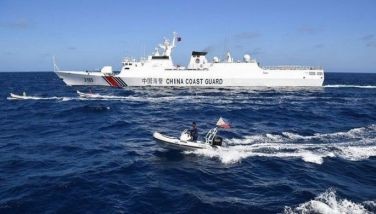DOST developing capability to predict disaster damage
MANILA, Philippines - The government will simulate severe weather and the extent of damage it would cause on affected areas.
Speaking at the Asia Europe Meeting (ASEM) Manila Conference (2014) at the Diamond Hotel yesterday, Science and Technology Secretary Mario Montejo said his department is building up capability for predictive damage as a result of its successful implementation of Projects NOAH (Nationwide Operational Assessment of Hazards) and DREAM (Disaster Risk Exposure Assessment for Mitigation).
He defined predictive damage as the capability to simulate and model severe weather events and the amount or extent of damage that it would cause to the areas affected.
Montejo said this capability to do “predictive assessment,†as well as their other accomplishments under Projects NOAH and DREAM, showed that the government had learned its lessons and is building up its capabilities toward disaster risk reduction and management and zero casualty.
“This approach is not only applicable for response or near-term planning but may also be used for a medium- and long-term disaster risk reduction program,†he said.
These projects had enabled the government to build an impressive database of high-resolution, 3D multi-hazard maps, he added.
Montejo said the DOST recognizes that the devastation of Super Typhoon Yolanda called for new ways on the practice of disaster risk reduction and management and its inclusion as priority in the country’s development agenda.
“Recent severe weather events clearly showed that mega disasters are the new challenge we have to face,†he said. “And we cannot be caught flat-footed or ill-prepared because doing so costs us more.
“Advanced information on impending disasters derived through the application of science and cutting-edge technologies enables vigilant local governments and the public to take early action and in turn save lives.â€
Probability-based behavioral damage models for various types of infrastructure and natural assets of concern can be developed by evaluating and analyzing historical data on damage caused by previous severe weather events.
These models are then used in conjunction with improving weather forecast methodologies that would allow forecasters to predict probable damage, allowing pro-active disaster preparedness and response.
Business continuity is the capability to restore, within a prescribed period, vital services both public and private after a severe weather event.
These vital services include power, communications, transport, food and drinking water, heath, security, banking and commerce.
Vital services can be restored after 12, 24 or 48 hours or more depending on the priority of a service.
A committed business continuity timetable for vital services could be made the goal for all disaster preparedness and response programs.
The predictive damage capability will serve as the starting point for analyzing the strength and vulnerabilities of critical assets and infrastructure against severe weather scenarios modeled using the maps DOST’s projects had generated.
It will allow planners to better understand areas for improvement, retrofitting and can even go as far as provisioning of backup services for disaster preparedness and response.
In the Philippines, the use of science-based weather information was made possible when DOST’s modernization projects, including flagship program Project NOAH, took off.
They offer an online platform to monitor typhoons and floods based on real-time data feeds from 1,000 rain and water level sensors nationwide, and the internationally renowned national 3D mapping project pursued under the DREAM project, particularly one tapping Light Ranging and Detection Technology (LiDAR) technology.
The DREAM-LiDAR project last month won the prestigious Geospatial World Excellence in Policy Implementation Award for 2014 awarded by the Geospatial World Forum in Geneva.
Both projects were launched under the direction of President Aquino to promote a more proactive stance on disaster management with the delivery of science-based information to local communities and national disaster managers.
- Latest
- Trending


























